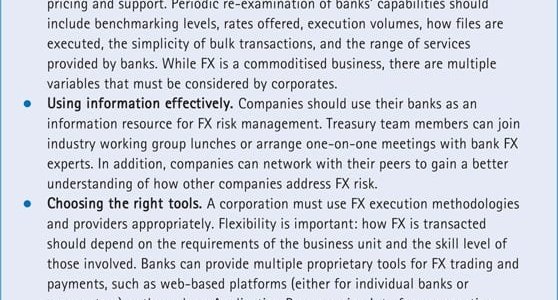by Carrie Moore, Managing Director, Energy & Power, Global Treasury Services, Bank of America Merrill Lynch
With international expansion a key business growth strategy for companies, foreign exchange (FX) risk is at the forefront of treasurers’ minds. By establishing responsive FX and investment policies and making use of the wide array of product sets available, companies have an opportunity to achieve best practice in FX risk management.
Any company that operates internationally is exposed to FX risk. The foreign currency obligation to pay a supplier, or the foreign currency payment a company expects to receive from a customer, is subject to change with fluctuating currencies. In recent years, FX volatility has been exacerbated by macro-economic instability and political uncertainty, with the Eurozone debt crisis, for example, having a significant impact on FX markets.
At the same time, structural shifts in the global economy are prompting many multinational companies to concentrate their expansion in rapidly growing emerging markets. Many of these markets – most notably China – are gradually liberalising their regulatory environments and currencies. However, in many instances, currencies and capital remain strictly controlled, which complicates FX risk management.
The task for the treasury in managing FX risk – and associated counterparty, economic and country risks – is increasingly complex. However, by selecting the right tools and working closely with a trusted advisor, companies have an opportunity to achieve their FX risk management objectives and safeguard their bottom line and future growth.
Sign up for free to read the full article
Register Login with LinkedInAlready have an account?
Login
Download our Free Treasury App for mobile and tablet to read articles – no log in required.
Download Version Download Version


























